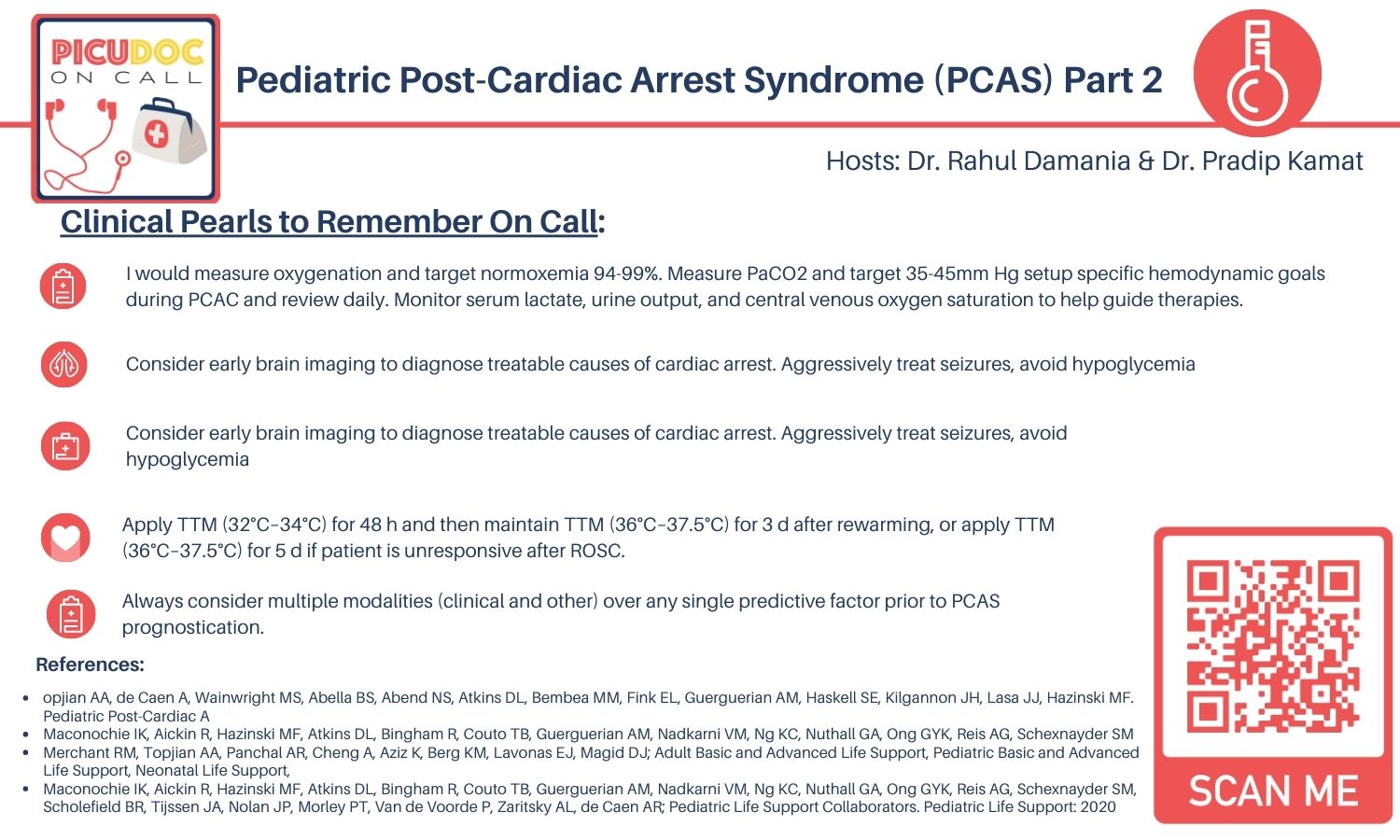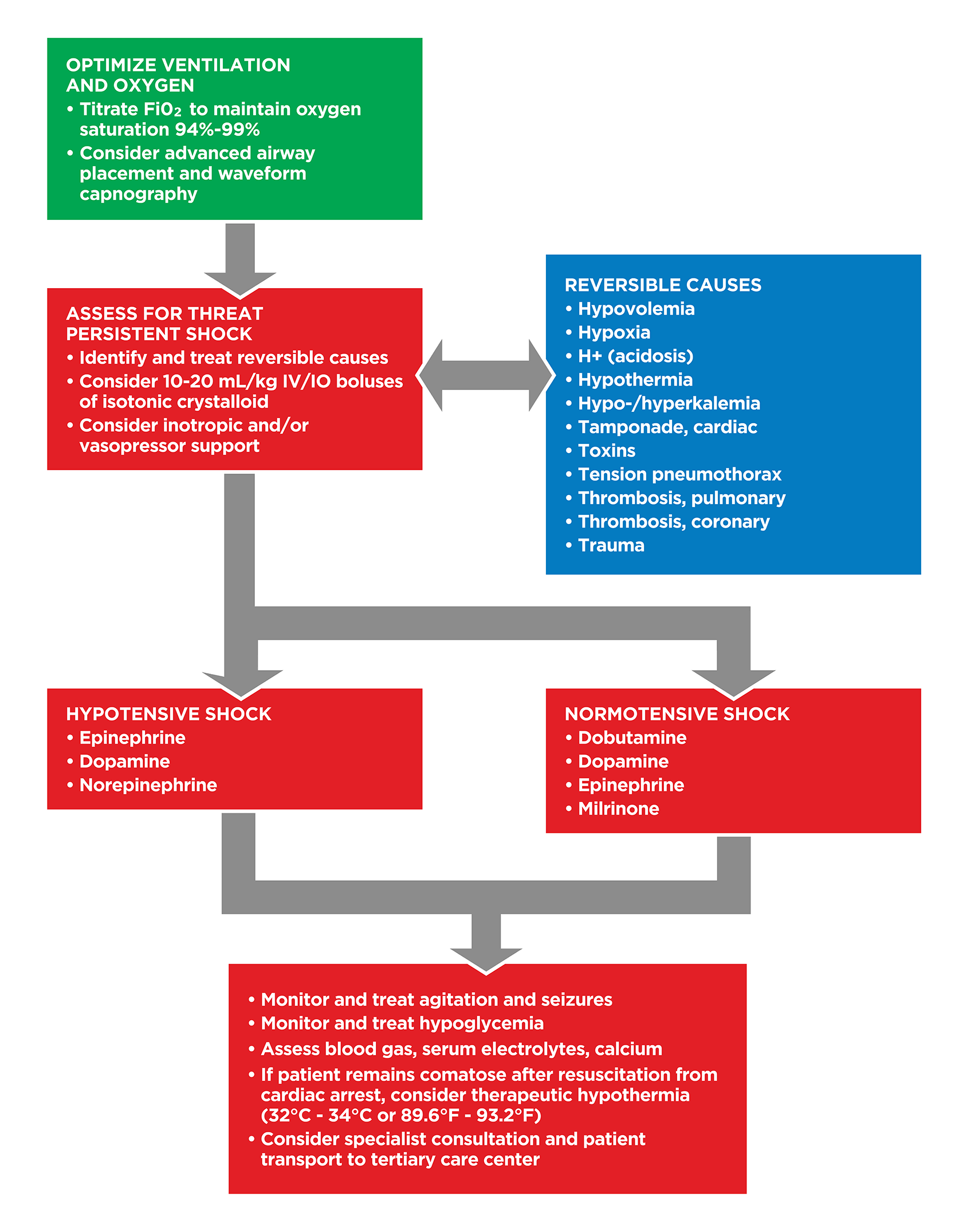Post Cardiac Arrest Oxygen Saturation Pals - Support tissue perfusion and cardiovascular function. Web pcas is a pathophysiologic response to cardiac arrest that has 4 key components: Web the statement summarizes the epidemiology, pathophysiology, management, and prognostication after. Web optimize cardiopulmonary function and vital organ perfusion.
Support tissue perfusion and cardiovascular function. Web the statement summarizes the epidemiology, pathophysiology, management, and prognostication after. Web optimize cardiopulmonary function and vital organ perfusion. Web pcas is a pathophysiologic response to cardiac arrest that has 4 key components:
Support tissue perfusion and cardiovascular function. Web pcas is a pathophysiologic response to cardiac arrest that has 4 key components: Web optimize cardiopulmonary function and vital organ perfusion. Web the statement summarizes the epidemiology, pathophysiology, management, and prognostication after.
Pediatric Post Cardiac Arrest Syndrome (PCAS) Part 2
Web the statement summarizes the epidemiology, pathophysiology, management, and prognostication after. Support tissue perfusion and cardiovascular function. Web optimize cardiopulmonary function and vital organ perfusion. Web pcas is a pathophysiologic response to cardiac arrest that has 4 key components:
PALS post cardiac arrest care
Web the statement summarizes the epidemiology, pathophysiology, management, and prognostication after. Web pcas is a pathophysiologic response to cardiac arrest that has 4 key components: Support tissue perfusion and cardiovascular function. Web optimize cardiopulmonary function and vital organ perfusion.
Immediate PostCardiac Arrest Care Algorithm
Web the statement summarizes the epidemiology, pathophysiology, management, and prognostication after. Support tissue perfusion and cardiovascular function. Web pcas is a pathophysiologic response to cardiac arrest that has 4 key components: Web optimize cardiopulmonary function and vital organ perfusion.
Postcardiac arrest care algorithm. SpO2, oxygen saturation; PaCO2
Web the statement summarizes the epidemiology, pathophysiology, management, and prognostication after. Web optimize cardiopulmonary function and vital organ perfusion. Web pcas is a pathophysiologic response to cardiac arrest that has 4 key components: Support tissue perfusion and cardiovascular function.
Important Algorithms First10em Updated 2015 Trauma Airway Algorithm
Web pcas is a pathophysiologic response to cardiac arrest that has 4 key components: Web optimize cardiopulmonary function and vital organ perfusion. Web the statement summarizes the epidemiology, pathophysiology, management, and prognostication after. Support tissue perfusion and cardiovascular function.
ACLS Algorithms You Need To Know eMedCert Blog Acls algorithm
Web optimize cardiopulmonary function and vital organ perfusion. Web the statement summarizes the epidemiology, pathophysiology, management, and prognostication after. Support tissue perfusion and cardiovascular function. Web pcas is a pathophysiologic response to cardiac arrest that has 4 key components:
Postcardiac arrest care
Web optimize cardiopulmonary function and vital organ perfusion. Web the statement summarizes the epidemiology, pathophysiology, management, and prognostication after. Web pcas is a pathophysiologic response to cardiac arrest that has 4 key components: Support tissue perfusion and cardiovascular function.
Postcardiac arrest care
Web pcas is a pathophysiologic response to cardiac arrest that has 4 key components: Support tissue perfusion and cardiovascular function. Web optimize cardiopulmonary function and vital organ perfusion. Web the statement summarizes the epidemiology, pathophysiology, management, and prognostication after.
Hypoglycemia in Cardiac Arrest
Support tissue perfusion and cardiovascular function. Web optimize cardiopulmonary function and vital organ perfusion. Web pcas is a pathophysiologic response to cardiac arrest that has 4 key components: Web the statement summarizes the epidemiology, pathophysiology, management, and prognostication after.
It's never too late or too soon to begin a lifestyle that targets
Web optimize cardiopulmonary function and vital organ perfusion. Web pcas is a pathophysiologic response to cardiac arrest that has 4 key components: Support tissue perfusion and cardiovascular function. Web the statement summarizes the epidemiology, pathophysiology, management, and prognostication after.
Web Pcas Is A Pathophysiologic Response To Cardiac Arrest That Has 4 Key Components:
Support tissue perfusion and cardiovascular function. Web optimize cardiopulmonary function and vital organ perfusion. Web the statement summarizes the epidemiology, pathophysiology, management, and prognostication after.









